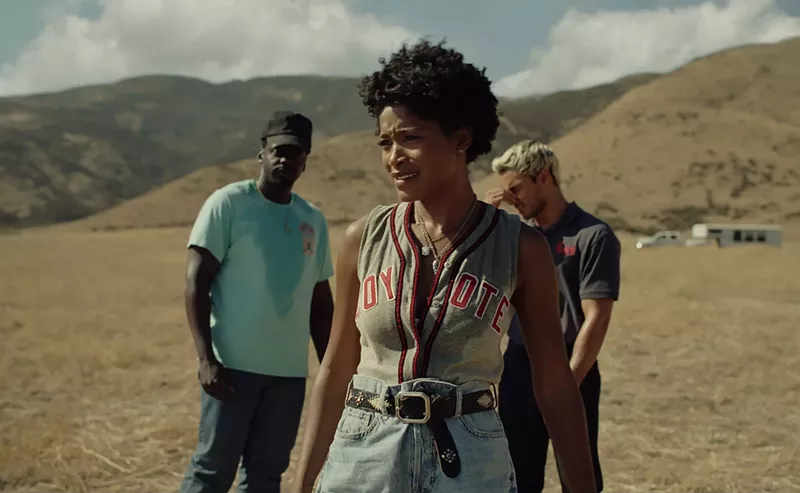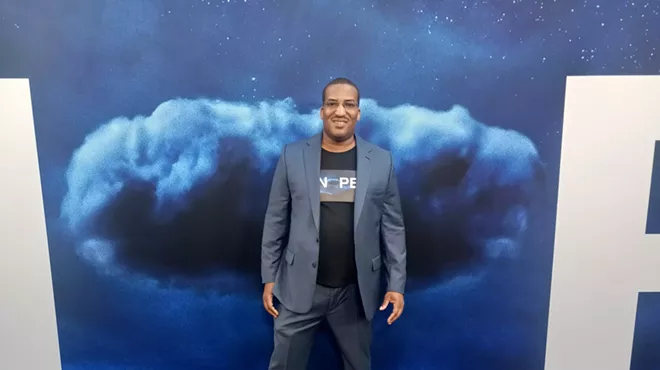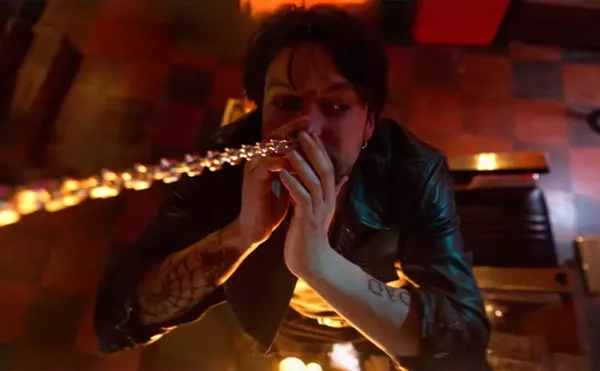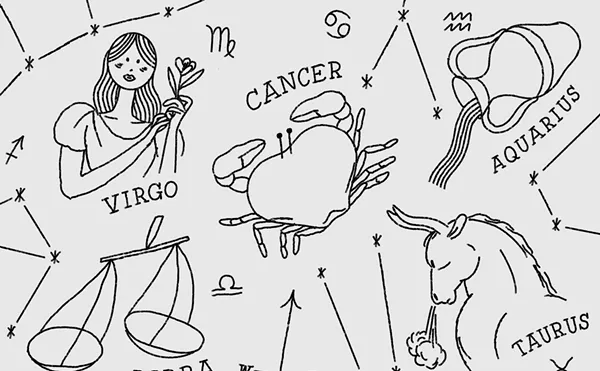
Audio By Carbonatix
[
{
"name": "GPT - Leaderboard - Inline - Content",
"component": "35519556",
"insertPoint": "5th",
"startingPoint": "3",
"requiredCountToDisplay": "3",
"maxInsertions": 100,
"adList": [
{
"adPreset": "LeaderboardInline"
}
]
}
]

Since delivering an instant hit with 2017’s Get Out, a fine-tuned horror-satire whose sense of ease and artistic surety proved so palpable that its direction almost felt offhand, Jordan Peele has struggled to recapture that same almost-casual air in his artistic labors. Ambitious and inventive as he is fascinated by the past, the writer-director has pushed himself in different directions with each of his last two films, delving further into political allegory in 2019’s admirable, sometimes clumsily woven Us, and stuffing his work with references and quotations, as in Nope, his third and newest solo feature. But his works post-Get Out have maintained their balance of slyness and weight better than they’ve wedded their respective scenarios to themes, and with Nope, the musings seem to float through striking frames and scenes without ever quite rooting themselves.
A suspense-driven work joining western, sci-fi, and horror tropes and imagery — sifting consciously as it does through the history of each genre – Nope is easily the most patient of Peele’s features to date. A UFO-focused story featuring echoes of Steven Spielberg’s Close Encounters of the Third Kind and M. Night Shyamalan’s Signs, this is a film on some level about watching and waiting, with characters gazing at the clouds, starting or thrilling to the flickers of movement that they see. Announcing itself as dealing with “spectacle” with a title card featuring a Biblical quote at its start, Nope’s metatext feels in some sense obvious, at times stated plainly. Dealing in the action, methods, aims, and effects involved in both capturing and consuming images, it’s preoccupied throughout with the history of film itself.
Set largely at Haywood’s Hollywood Horses ranch outside Los Angeles, a Black-owned legacy business whose roots in film production stretch back to the dawn of the form, Nope’s opening finds its key players struggling to recreate past successes. When Otis “OJ” Jr. (Daniel Kaluuya) and his sister Emerald (Keke Palmer) lose their father and the ranch’s longtime proprietor (Keith David) in a mysterious accident, they seek out opportunities anywhere they can. Whether on white-dominated film sets whose crews condescend to both siblings and their livestock, or hawking prize animals to a minor local celebrity and theme park owner (granted a practiced air of smug self-confidence by Steven Yeun, an actor who grew up in metro Detroit), the Haywoods find themselves caught up in the fumblings and embarrassments which so commonly characterize gig work. Amid their fatigued searching, they find something surprising: an object in the sky which appears at nighttime darting behind clouds, and often spooks their horses.
With this new sighting, the Haywoods find a glimmer of hope; if they manage to capture some credible image of an alien presence, they could net not only fame but a hefty profit. As shot by Hoyte van Hoytema, each sighting of a flying saucer feels clear, credible, and unadorned amid the richer backdrop of the Haywood ranch’s dusty hills, if still hard for the film’s earthbound cast to believe in for a time, and Peele lets their quest unfold with a script that alternates between moments of fearful spectacle and workaday deliberations — with evenings spent going to stores for supplies and setting up cameras that rhyme with tending of horses at morning and night. This balance lends a sharpness to the film’s more obvious “widescreen” sequences, climactic moments that accumulate and intensify in a bundle towards Nope’s finish in something close to the traditional Hollywood mode, though unfortunately they forsake something of the patience that distinguishes the film’s first half.
Some portion of the film’s prevailing “waiting” air is surely due to the presence of Peele’s previous collaborator, Kaluuya. But between his breakout role leading Get Out and now, Kaluuya’s physicality and technique has shifted. Now 33, his face and form have become heavier, his movements and especially stares now acquiring a gravity they had less when he was younger, projecting as something more like an everyman then. As OJ, his performance, though still totally transfixing, is made up largely of cynical, half-hearted mutterings and stares.
The weight of Kaluuya’s presence here is complemented (if not quite matched) by Palmer’s emotional agility and buoyancy. Dressed in summery tanks, jerseys, and shorts, in contrast to her brother, who often seems buried beneath hoodies, ball-caps, and a brambly goatee, Palmer’s Em can seem determinedly lively, working ardently to fill some sort of void that hovers near her. A sense of polarity in effect between the siblings becomes easily the film’s strongest animating force: a connection expressed more richly through performance than in any exchange of words. More than types, thanks to the strength of chemistry and casting, the two manage to hold down even the film’s most demanding scenes whether together or alone.
In light of this, it’s that much stranger that the film’s climaxes — the IMAX-flattered confrontations in which characters face off against risks to self, prosperity, and home — seem like harder sells than those in which they’re stalled, waiting in cars and parlors. Despite all the laying of intriguing, eccentric thematic groundwork in Nope’s first two-ish hours, the moments at which things come to a head feel schematic and familiar by comparison. While fun enough, some part of that surely stems from it feeling disconnected from what came before, the rules and personality tics presented earlier having shifted more as a matter of convenience than evolution in character or tale. Thematic and visual contrasts between tradition and modernity, analog and digital, watching and making, and fakery and reality seem wheeled out and subsequently dropped, rather than fully engaged with and thought through. By Nope’s end, its characters can feel reduced to roles as plucky problem-solvers working in a Spielbergian mode that seems discontinuous with the people they’d been first; they become, improbably, a bit anonymous. For all that’s here, so much in Nope feels lost or undermined in the stew of many things Peele as an artist seems hungry and eager to do. But we’re lucky to have him, even when the fact stands as a liability: Peele really wants to do it all.
Stay connected with Detroit Metro Times. Subscribe to our newsletters, and follow us on Google News, Apple News, Twitter, Facebook, Instagram, Reddit, or TikTok.






